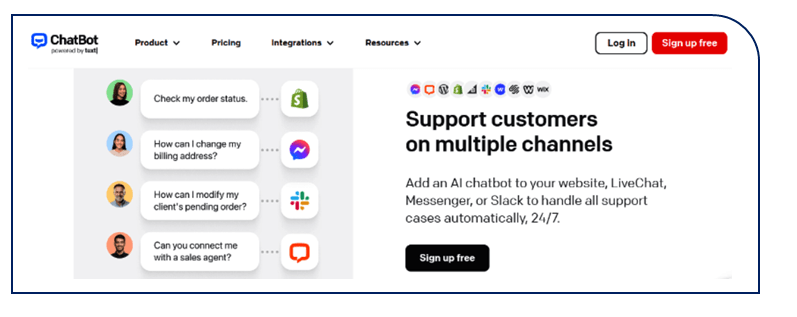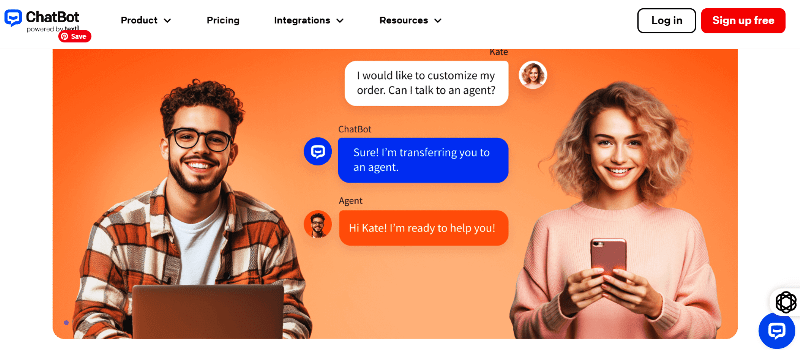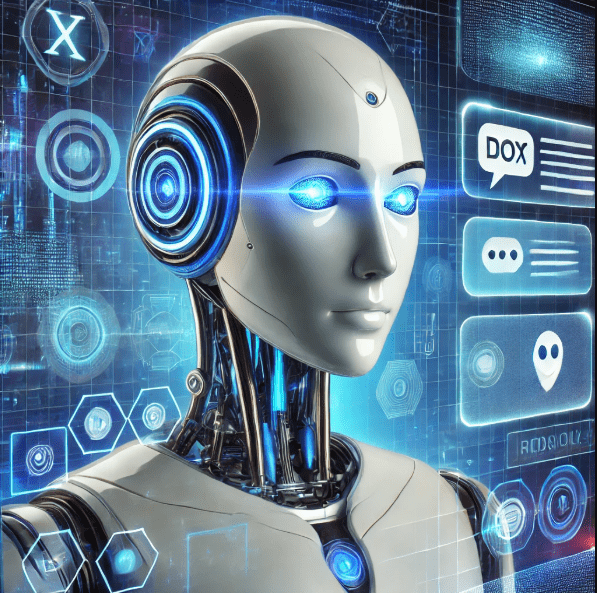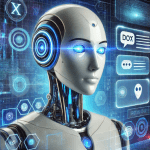Introduction
The world of communication is changing very fast. Artificial intelligence (AI) chatbots are becoming essential tools for digital businesses everywhere. These digital assistants offer quick responses and personalized interactions, making them key players in customer service and other key fields including digital marketing and healthcare. This AI ChatBots review article explores their features, applications, challenges, and future prospects.

Chatbots are generally AI-powered software programs designed to simulate human conversation through text or voice.
They utilize natural language processing (NLP) and machine learning techniques to understand user inputs and respond accordingly, providing assistance, answers, or performing tasks.
You can incorporate AI Chatbots into websites, messaging platforms, and mobile apps to handle customer service inquiries, guide users through processes, or even complete transactions.
There are two main types:
- Rule-based Chatbots: These ones follow predefined responses and workflows.
- AI Chatbots: Employ machine learning and NLP to provide more dynamic, context-aware conversations.
You may as well use AI Chatbots to improve efficiency, reduce response time, and enhance user experiences.
The Communication Revolution by AI Chatbots
You’ll find that AI chatbots have transformed communication by enabling instant, intelligent, and personalized interactions across various industries.
These chatbots, powered by artificial intelligence and natural language processing, provide 24/7 customer support, automate business processes, and enhance user engagement.
Similarly, in e-commerce, you’ll find that AI chatbots assist customers with product recommendations and order tracking, while in healthcare, they are offering crucial medical advice and scheduling appointments.
On social media platforms, chatbots are being used to improve user interactions, while businesses are leveraging them for marketing and lead generation.
Finally, continuous advancements in AI have made chatbots more human-like, capable of understanding emotions, context, and complex queries.
This revolution is making communication more efficient, accessible, and even cost-effective, shaping the future of digital communications the way you’d want.
The Rise of AI Chatbots in Customer Service and Beyond
The truth is that businesses are increasingly turning to AI chatbots to enhance customer service. They have the ability to respond instantly to inquiries, thereby improving customer satisfaction.
From e-commerce sites to large corporations, chatbots are a force to be reckoned with.
AI chatbots streamline customer communication by offering 24/7 support.
This constant availability allows businesses to address issues without delay, leading to happier customers.
Setting the Stage: What to Expect from This Review
This review will delve into the key features of AI chatbots, compare top platforms, showcase real-world applications, address challenges, and predict future trends.
We will look into various functionalities, capabilities, and applications of modern chatbots, highlighting their ability to enhance customer service, streamline workflows, and improve accessibility.
We’ll also examine the challenges faced in the development of AI chatbots, such as understanding natural language and ethical concerns, while showcasing the immense potential of this technology in shaping the future of communication.
Key Features and Capabilities of AI Chatbots
Natural Language Processing (NLP) and Understanding

Natural Language Processing (NLP) is vital for chatbots. This technology enables them to perfectly comprehend human language. For instance, advanced chatbots can understand sentiment, context, and even slang.
Examples of Advanced NLP
- Google’s Dialogflow excels at intent recognition.
- Amazon Lex uses deep learning for speech recognition.
Despite their capabilities, NLP does have limitations. Misunderstandings can occur if questions are ambiguous, so you must provide a straightforward and clear inquiry.
Machine Learning and Adaptive Capabilities
Machine learning empowers chatbots to learn from interactions. As they gather data, their responses improve over time.
- How It Works: Chatbots analyze past conversations to understand user preferences better.
The role of data is crucial in training these models. Quality data leads to more effective and accurate chatbots.
Top AI Chatbot Platforms: A Comparative Analysis
Leading Chatbot Platforms: A Detailed Overview

Several platforms stand out in the AI chatbot market, including ChatBot®, Dialogflow, Amazon Lex, Character ai chatbot and Microsoft Bot Framework. Each offers unique features and pricing models, but ChatBot® is the best AI chatbot I know so far.
- Cost Comparison:
- Dialogflow offers a pay-as-you-go model.
- ChatBot offers goal-oriented pricing that scales with you
- Amazon Lex has a tiered pricing based on usage.
Ease of Use and Integration
These AI platforms integrate well with various applications. Dialogflow is a Google user-friendly tool, appealing to non-tech users. Microsoft Bot Framework offers robust tools for developers, while ChatBot® is an all-in-one intuitive drag-and-drop visual builder suitable for non-tech clients.
AI Chatbots Features: Strengths and Weaknesses
Every platform has specific strengths and weaknesses. For instance, Dialogflow excels in multilingual support, while Amazon Lex is known for voice interaction.
- User Experience:
- Dialogflow is praised for its interface.
- Microsoft Bot Framework’s steep learning curve is a drawback for some.
- ChatBot is praised for its awesome features, workflows, and automations through plug-and-play integrations.
AI Chatbots: Real-World Applications and Use Cases
Revolutionizing Customer Service: Enhanced Support and Efficiency

AI chatbots have revolutionized customer service.
- Case Study: Retail companies report a 30% increase in customer satisfaction after implementing a chatbot to handle support queries.
- Statistical Data: Businesses using chatbots report up to 70% faster response times. “87% say that AI reduces agent effort, and “92% report that AI saves time resolving customer issues.”
Boosting Sales and Marketing Efforts
AI chatbots also play a crucial role in sales and marketing.
- Lead Generation: Many brands use chatbots to capture leads through engaging interactions.
- Increased Engagement: Statistics show that chatbots can improve conversion rates by 20 to 25%.
- Even in small contact centers, “74% report that AI increases revenue”.
Challenges and Limitations of AI Chatbots
Overcoming Biases and Ensuring Fairness in AI Chatbots
AI chatbot apps and software have biases which developers must address first for them to work efficiently. These biases normally arise from the data used to train them during ai chatbot development services.
- Ethical Considerations: Chatbots should be designed to ensure fairness and inclusivity in wherever they are being used.
Expert insights suggest continuous monitoring and diverse data training to promote ethical AI development processes.
Ensuring Security and Data Privacy
Data privacy is a significant concern. Ensuring security and following regulations like GDPR is of paramount importance.
- Data Protection Measures: If you own a company, you must encrypt data and implement strict access controls to protect user information.
The Future of AI Chatbots: Trends and Predictions
Advancements in Natural Language Understanding and Generation
Future developments in NLP will likely enhance user experiences.
Chatbots may become even more conversational and context-aware like in the case of Character ai chatbot.
Character AI is a neural language model chatbot service that can generate human-like text responses and participate in contextual conversation via created characters.
- Predictions: Improved understanding could lead to more meaningful interactions with users.
Integration with Emerging Technologies
You may also integrate AI chatbots with technologies like the Metaverse and IoT to create unique user experiences.
- Innovative Applications: Examples include virtual shopping assistants in augmented reality environments, healthcare, and customer support in an array of industries.
Experts in the AI industry predict that collaboration between AI chatbot app and other technologies will be the next frontier in ai chatbot development services, and it is true.
Read this ultimate live chat review and discover the best LiveChat tool you can incorporate together with your chatbot for awesome customer experience.
Conclusion: Embracing the Potential of AI Chatbots
AI chatbots represent a fundamental shift in how businesses communicate with customers. Understanding their features, applications, and challenges is crucial for any organization looking to enhance interactions. This is evident as shown in some AI chatbot reviews.
Key Takeaways and Recommendations
- Choose a platform that fits your needs and budget.
- Continuously monitor chatbot performance and user satisfaction.
- Invest in ethical AI practices to ensure fairness and security.
The truth is that the potential of AI chatbots is enormous. As they continue to evolve, businesses will find new ways to leverage their capabilities, transforming communication across industries.
Try ChatBot® now and enhance your customer communications for a brighter future.












